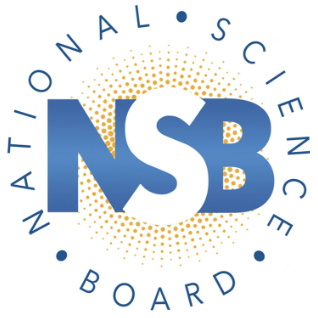From Publication to the Public: Expanding your Research Beyond Academia
[Reposted with permission of the SAGE Connection blog, where this first appeared.]
SAGE Publishing, the parent of Social Science Space, recently held the webinar From Publication to the Public: Expanding your research beyond academia with Maria Balinska, editor of The Conversation US. The Conversation is an independent, non-profit media organization that publishes news analysis and commentary written by academics and edited by journalists aimed at the general public; Social Science Space, for one, routinely publishes some of their stories.

Maria Balinska
For the webinar, hosted by SAGE’s head of US public relations Camille Gamboa, Balinska drew from her journalism background — she was previously of BBC London and a 2010 Nieman Fellow at Harvard — to give some tips on how academics can translate their research for general audiences, pitch stories on their findings to media outlets, and use The Conversation US as their own public outlet. You can watch the webinar above.
The webinar included a lively Q&A session with the audience, and Balinska provided answers to questions she couldn’t get to during the presentation that appear below, along with her slides and a Storify of the Twitter activity that occurred during the webinar.
***
Topic: Science communication
What suggestions do you have for increasing media pick-up of new research, beyond what you explained already?
If this is a general question about how to get covered by other media (versus writing the piece yourself) the key is to make clear quickly why this is newsworthy: What’s new in your research? How does it advance the field?
If it’s a case of putting together a pitch to an editor for an article then the key, as discussed, is to put yourself in the commissioning editor’s shoes. Does your research relate to anything that is in the news? Does your research relate to an ordinary citizen’s life and if so how? Is your research counterintuitive or surprising – does it overturn previous or widely held assumptions? Is your research providing an unusual or quirky perspective on the world around us? An affirmative answer to any of these questions is a good entrée into pitching a piece to a publication.
Related to this “explainer” point: Assuming jargon (bad) can be distinguished from careful, precise scholarly discourse (good), any recommendations how to “translate” scholarly discourse into “publicly accessible” discourse? (Or: how to “dumb down” language without dumbing down content? Do editors help with that dumb down translation work?)
First off, it should be said that it is the editor’s job to help with that translation work, first by identifying any words or phrases that are not commonly understood and second by suggesting ways to explain these terms to the general reader. One general recommendation on translation is to think how best to describe a given scholarly term in a few, more colloquial, words. Another is to think about how a metaphor could help the reader understand. Visual ones can be particularly helpful.
How does one determine the best news source to communicate research to the general public? What is the best way to determine best source/fit for topic?
The first question you want to ask yourself is what audience do you want to address? Is it, for example, an audience that likes reading about science or is it is policy makers? You then want to identify a few publications or media platforms that specifically address these groups (e.g. Scientific American or The New York Times). And once you’ve done that, see if and how they have previously covered topics similar to that of your research. This will give you a clue as to whether they are a good fit for your research and how to approach their editor.
Topic: The Conversation US
Who is your target audience (who reads their material)? How do you attract the audience to the material?
The Conversation US has a number of different audiences – on site, on social media and through republication. Generally speaking we would describe our readers as curious and educated. We attract our readers to the content through our daily newsletter (which now has over 26,000 subscribers), through social media (Twitter and Facebook) and through republication. We publish under a Creative Commons license which means that our content is free to republish. Our regular republishers include Newsweek, Time, Scientific American, Business Insider, Quartz and Slate.
How can researchers get involved? What is the process?
If you are a researcher affiliated with an academic institution you can establish a profile page in our content management system here. You can then pitch a story through our pitch form that you can find here. Or you can get in touch directly with a particular desk editor: their names are at the bottom of our website.
Regarding researchers writing for this online publication, can you clarify again if the author has to use his/her own research results, or can the author make use of others’ research studies? And which do you prefer?
We welcome pieces based on authors’ own research or on the research of others. The key for us is that the author is writing in his or her area of specialization.
How are you connecting with experts that you think can write a piece on a timely topic? Or are they reaching out to you? In either case, how are you determining the quality and the expertise of the person? What is the decision-making process on this?
We look for contributors in a number of different ways. We are in regular contact with university media teams to ask them whom they would recommend to write on a given topic; we do our own research to find out who has written peer reviewed articles on this topic; we also welcome pitches directly from researchers. As to the expertise of our contributors: we always check up on their academic affiliation; we ask that they write in their area of expertise; we turn down stories that are outside of their area of expertise; we ask that arguments in the article be backed up by evidence and data and we ask that the evidence and data be linked to the original sources.
What is the usual timeline from submission to release?
The average time between pitch and publication is a week to ten days but in the case of pieces relating to breaking news stories we work with the contributor to turn things around in a day or less and when we are planning for an anniversary or an event that is on the calendar months in advance (e.g. Rio Olympics) we can allow for a lot more editing time.
With the op-ed, one must confirm that the piece is exclusive to them and not published elsewhere. Can you clarify what you meant when you said that articles published in The Conversation US can be published elsewhere and how this relates to that exclusivity agreement?
Some publications insist on exclusivity but an increasing number do not. Our content is published under a Creative Commons license which means that other publications can republish for free as long as they do not alter the text and headline. We are therefore by definition not exclusive although, because others republish our content, we do not republish other publications’ content. For more on our Creative Commons license please read our policy here.
And as a reminder, our regular republishers include Newsweek, Time, Scientific American, Business Insider, Quartz and Slate.
If an article is published on The Conversation US, can it be cross published on the scholar’s personal website/blog?
Yes, in fact we like this to happen! The key is that it be published with The Conversation US first given the CC license and republishing.
Does The Conversation US focus only on US-related issues/topics? Will it accept research conducted outside of the US?
We, in fact, want to do more on international topics. The key for us then is how to present them to the American reader.
What you are doing with The Conversation US is just amazing. What motivates you?
Thanks — your comment is motivating for starters! The fact is that in today’s journalism landscape it’s not often that you’re asked to engage with ideas and produce high-quality explanatory journalism working with the experts in the field. It’s an exciting and fulfilling job.

















































































